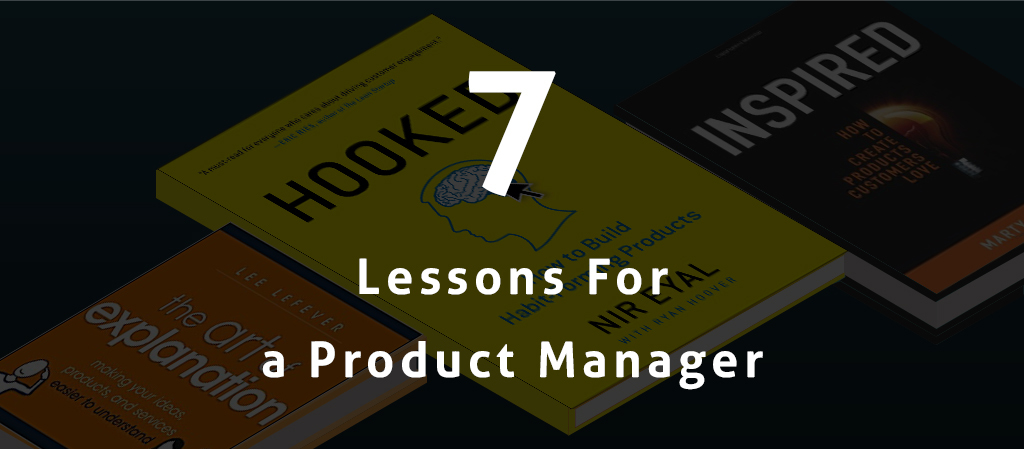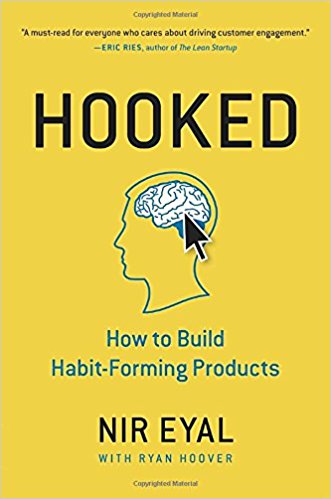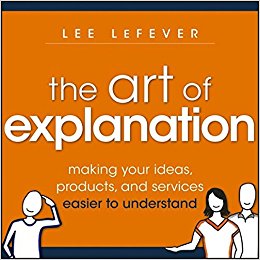
It’s often said that no two days of a Product Manager are ever the same. For me, at Alphalogic, it’s been doubly true.
A regular (if there is such a thing) Product Manager will interact, observe and guide different teams of people involved in building products, each with different roles and responsibilities. Apart from that, a Product Manager must know and understand his users best. Hence, they are directly responsible for creating new products.
Once they decide what to build, their job entails aligning strategy and tactics for everyone in the firm, from the top executives to engineers and designers. As such, he will be explaining, negotiating, working, facilitating, sharing knowledge and information with extremely different kinds of people, where unplanned events majorly direct his everyday planner.
My job is additionally variable as I (owing to Alphalogic’s B2B nature), along with the above activities, am also working with different Product Managers in different firms across various industries; I help in planning their product development, and in making elimination decisions.
It is truly delightful being involved and responsible for so intimately with so many different products. I have no shame in admitting I’ve made mistakes, lots of them in fact, but I can proudly attest I have learned a good deal from every single one of them!
And often, such lessons were complemented with some very insightful books. That’s what this post is going to be about a review of a few lessons I learned from such books.
For simplicity’s sake, I’ll focus on three books:
- Hooked by Nir Eyal
- Inspired by Marty Cagan
- The Art of Explanation by Lee LeFever
Hooked by Nir Eyal

This was a very persuasive and thoughtful book on the art of building “habit-forming” products. Through his experiences, Eyal has gained great insights into influencing customer behavior.
He explains his model of building habits, calling it the Hook Model. It involves four steps: Trigger, Action, Variable Reward, and Investment.
Lesson I – Subtleties of the Hook Model
I’ll explain this model briefly:
You start by engaging your customer through a trigger (which can be internal or external). The trigger is anything that causes your user to use your product. It could be an external one, like an advertisement that promises to alleviate his problem; the aim is to eventually convert them into internal triggers to build habits. For the trigger to be successfully internalized , the user should instinctively use your product when he faces the problem!
Once triggered, the User will act upon it if he desires the promised reward. For the action to become a habit, it must be as simple as possible, simpler than even thinking about it.
After taking the action, the user expects his reward. The neat trick here is to have a reward that is variable, in order to hook him! If he can always anticipate the exact reward, he will lose interest and won’t come back.
Lastly, you ask your user to personally contribute to the product in the form of a small investment: get me to work a little and add their value to it. Studies have shown that a personal investment by users in a product is bound to increase its value disproportionately.
For instance, think about how Facebook uses this model

Lesson II – To Hook or Not
I admire Eyal’s eloquence in explaining each point so convincingly. Each of his points is complemented with a real-life example proving its validity.
For a product to be able to successfully hook a user, it must target the particular pain point in emotional terms, and not product features.
One particular insight here is that, when starting to think about a new product, you must, first and foremost, gain a deeper understanding of the pain. The technique called 5 Why’s is helpful here: you keep asking the user why they use a product, up to the point they reveal the fundamental emotion that guides them, like loneliness or fear.
You might think what’s so insightful about this idea, as it’s common knowledge that great products are those that solve users’ problems, and Eyal simply takes it deeper by acknowledging the pain behind the problem in order to alleviate it more effectively.
But then comes the more counter-intuitive and insidious aspect lurking underneath: some of the most successful startups are hardly painkillers or problem solvers – like Facebook, Pinterest, Twitter, Instagram. These companies are the masters of Eyal’s Hook model.
They pose as problem solvers, but actually only hook the user by exploiting his weaknesses by playing on his fears and offering only a temporary relief. Something very common with the principle of addiction!

From what I see, there isn’t much difference between habit-forming products and addictive products. When explaining the hook model, Eyal’s powerful rhetoric is careful enough to never refer to ‘habits’ as “addiction”. After all, “Creating Addictive Products” doesn’t have a nice ring to it.
Yet, one would be a fool to ignore the potential of the hook model.
The Hook Model is all too powerful. The question remains: as a product manager, how will you harness that power?
Inspired by Marty Cagan

Unsurprisingly, this book, just like its title suggests, inspired me! (Alright, I have a tendency to make such awesome jokes, bear with me!)
Cagan, who needs no introduction, is one of the key thinkers and innovators when it comes to Tech Product Management.
And anyone can see how he has transcribed all his significant thoughts, strategies, practices, and experience into this entertaining and inspirational book. I would recommend it to anyone who wishes to understand or know how the most successful tech companies today have been producing winning products time after time.
With specific and personal examples, Cagan lays out various factors that play a role in creating revolutionary products that could potentially disrupt an industry.
For the sake of simplicity, I’ll talk about three lessons that I took from the book.
Lesson III – Focus on the right problems
Most of the teams I worked with had the tendency to base their product development on customer feedback and reviews collected by their own marketing and support people. That, on the surface, sounds like a valid approach to building products that people want, but, like Cagan suggests, it hardly ever produces a revolutionary product. At most, it’ll help in making incremental changes to the existing product line.
Instead, Cagan says Product Managers should focus on the misery of their current and potential users to come up with ideas and business opportunities.
He quotes Jeff Bonforte to concisely sum this idea:
I like my Product Managers to focus on the most miserable thing people have to deal with every day. If you can solve that problem, that actually changes behavior, then that can lead to truly big product wins.
– Jeff Bonforte
Hence, when finding out such “misery”, your research has to include a much wider audience, with questions that expose their pain-points. A major pitfall for many firms is asking people what they want. No one really knows what they want until they see it, so that question would never give you a fruitful answer.

Once you know their true misery or pain-point, you can proceed with prescribing solutions and testing them. That brings me to the next lesson I learned.
Lesson IV – Test your assumptions Daily
A lot of our clients tend to first build a sort-of functional MVP before beginning any kind of validation testing.
Like, Cagan points out, it’s a good approach, but can be quite wasteful in the rapidly changing tech world.
(You may want to check out the MVP blog post written by our CTO)
Once you have identified a major problem or pain-point correctly, you’ll likely build an MVP in an attempt to solve that problem. Here, one question is still unanswered: How do you know people want the solution you’re trying to build?
To answer that, you talk to as many users as possible on a daily basis, in order to test their behavior to accept or reject your list of solutions.
Cagan advises that you test them at each and every stage, quickly moving from one to another once rejected. He suggests a hopeful target of at least 1 iteration (of any idea) each day.
You slow a little when an idea has received significant validation. Then, you build a more sizeable product and test it at every significant stage.
A Product Manager may think his role is marginalized once an idea (of a solution) has been validated and agreed on, but he couldn’t be more wrong! I’ll explain why in the next lesson from Cagan’s Inspired.
Lesson V – Inspire your Firm
A Product Manager can be the most passionate about the business idea, but unless everyone in the firm building the product becomes as passionate as him and sees his vision, the product will not succeed.
Further, it is the Product Manager’s responsibility that everyone in the firm understands and believes in the vision.
Subtle ways through which a Product Manager forms relationships and manages people at work often come to decide how well they understand and work with each other.
To improve my Management style, I took another page from Cagan’s book and started including the lead designers and engineers in product development from the very beginning. That means they had the equal opportunity to diagnose pain-points and prescribe solutions for them.
By allowing them to be a part of product discovery, and including their perspective of tech potential, we reduced a lot of the usual friction and time.
Further, they could see the user and product requirements transparently themselves. Not only did this take any mistrust or miscommunication away, but it also led to an influx of ingenious ideas at a much faster rate. The vision was clear.
With that, I began managing by objective, and not instruction. Just like Cagan prescribed:
Never tell people how to do things. Tell them what to do, and they will surprise you with their ingenuity.
– Marty Cagan
The art of Explanation by Lee LeFever

I found some aspects of the HBO comedy series Silicon Valley quite amusing. Particularly because it got many aspects of the tech world right. Goes to show they consulted many people deeply involved in the valley.
There was one plot I found both funny and revealing: failure of excellent products due to users’ lack of understanding.
Richard’s product was excellent, but an average user simply didn’t understand what it did.
As my experience in the industry grew, I came to realize one brutal truth: no matter how good or bad your product is, its success or failure depends first on how well your user understands and relates with your vision. Only then will it depend on how good or bad it is.
Not just your users, but as a Product manager, it’s your duty to ensure everyone in the firm understands and relates to your vision (this also refers to management styles mentioned earlier). Only then, will the product satisfactorily fit your vision!
Lefever, an expert in the field, writes The art of Explanation to help people become more effective communicators by improving their explanation skills.
He explains a three-part process of making an explanation plan:
- Planning and Diagnosing any explanation problems
- Moving Explanation into production mode; deciding how to package the idea.
- How to present the idea in a medium that fits the target audience – involves looking at media options, presentation modes, recording and distribution choices etc.
For instance, often when explaining, you realize that people are simply not interested. How to plan for this?
Lesson VI – Making an Explanation Plan
Well, when you’re beginning your explanation, give people an invitation and a reason to care or feel interested. Also, make them feel confident that this is something they can understand.
Next, when thinking how to package it, try to build context. This is you trying to build a world around the idea. It’s talking about the forest first and then talking about the trees.
Perhaps a Business Manager trying to explain a complex method (like Agile) to top executives, could try to talk a bit about his team’s goals first, or their previous methods, and why they don’t work anymore. Then, you move on to present your main idea or method.
One of the most effective ways to present it is through stories. It doesn’t have to be a big developed story; it can just be very simply about a person who has a problem and pain, who finds a solution and then feels happy.
While telling the story, don’t forget to use connections. Connect your ideas to ideas that your audience already understands. Use analogies, and always remember to adjust your language to your audience’s experiences.
These simple stepping stones become a formulated plan.
Lesson VII – Explaining your product to users
If you remember watching Steve Jobs’ keynote addresses wherein he unveiled iPod and the iPhone, try to recall how he went about explaining their usefulness.
For instance, with the iPod, he started with the simple and common habit of music listening and mentioning the common problems with it. This gave the audience a reason to care and made them keen to listen further.
Then he places the music industry in context, by recognizing the various methods available to listen to music, and the problems associated with each. Then he presents the iPod.
His explanation of the iPod doesn’t focus on any of the technical details, but on how the iPod solves those problems. Further, he explains each benefit with a small story, example or analogy to emphasize them, like its famous slogan “1000 songs in your pocket”.

As a Product Manager, I indirectly knew the importance of explanation, but I reckon its extent escaped me until I read this book and reflected on its ideas.
Further, Emotional intelligence and Relationship Management are integral skills for an effective Product Manager. And better communication and explanation could be the difference between a team that’s motivated and a one that’s not.
Explanation plays a key role when a product manager communicates his/her ideas of a new product to the CEO and other teams in the firm. On it, rests the future of that idea in the company.
Conclusion
Due to the volatile and irregular nature of this job, there isn’t a simple set of skills that can make you an excellent product manager. Constant Learning is essential.
Yet, I hope through this post, you recognized some skills and insights helpful for a job like this. For instance, when coming up with new product ideas, focusing on the user’s problems and pain-points is much more helpful than just the product features.
Then, the importance of the seemingly small or transitional tasks is often understated. They form the backbone of one’s Management style and help build relationships among the firm. In particular, Emotional intelligence and Relationship Management are key skills for an effective Product Manager, as they help in communication and explanation.
Dhananjay (DJ) Goel is the CTO at Alphalogic, passionate about technology, startups, game of thrones and coffee. He enjoys working on challenging problems with innovative startups.
